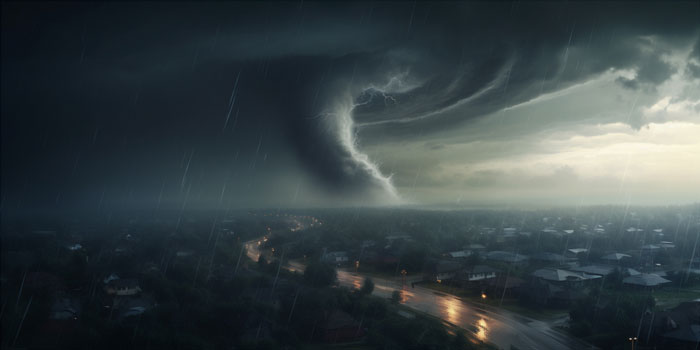According to climate experts, as the climate crisis accelerates, natural disasters will be more frequent and severe. In 2023, the U.S. experienced 28 separate weather and climate disasters costing at least $1 billion, surpassing the previous record of 22 events in 2020, according to the National Centers for Environmental Information (NCEI). 2023 was also the world’s hottest year on record.
In addition to natural disasters, there are potentially manmade and technological disasters for communities to prepare for, which is an ever-evolving task as no two emergencies are alike. As reported in Recreation Management’s 2024 Industry Report survey, 30.4% of survey respondents said they’re involved in disaster recovery assistance (up about six percentage points from 2023), including nearly 36% of parks respondents.
Houston, Texas, is one of the most flood-prone metro areas in the country. Many recall Hurricane Harvey in 2017, when
Houston was devastated by 50 inches of rain. In May of this year, storms flooded Houston neighborhoods, resulting in hundreds of rescues, and a powerful windstorm felled trees, blew out high-rise windows and left hundreds of thousands without power. As we spoke with Kenneth Allen, director of parks and recreation in Houston, Tropical Storm Alberto was threatening. “We’re just recovering from that last one and here we go again,” he said.
Allen explained that disaster response is a “citywide, coordinated effort,” where there’s a command center with cameras all over Houston and people with different backgrounds coming together. “All departments change their normal routines to get our city back on track. From personnel to facilities to equipment to vehicles, we make a complete switch in operations to accommodate the severity of the recovery that’s needed.”
This includes offering facilities for shelter, “or lily pads as we call them, until we can find safe, adequate locations for people to stay.”
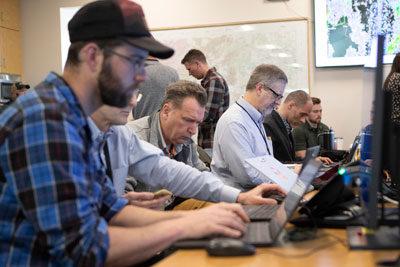
Allen said their department has an emergency manual guidebook, which is often updated after events, “available to any employee that would engage from an operational standpoint… what happens 72 hours out, 48 hours out, the day of and afterward.”
Houston has an Office of Emergency Management (OEM), and during emergencies the director hosts morning and nighttime
meetings, “depending on what’s needed.” All the department directors, the mayor, chief of staff, police, fire, public works, solid waste, health & human services, etc., are involved.
There are three designated levels of emergencies, which help determine response strategies, five designated centers around Houston used for response operations and aid, and three designated tiers of employees. “In the event of emergencies, tier one employees are on call, ready to go,” Allen said.
Heavy vehicles are available to move people in and out, and there’s notices that go out advising residents to leave neighborhoods and homes and get to high ground. “But oftentimes, people don’t anticipate the severity, so they’re stuck where neighborhoods are flooded,” said Allen. And since first responders can only do so much, he described how volunteers come out with their own boats and life jackets, “rescuing neighbors and working together.”
Allen said he has a volunteer coordinator within his department, and after storms, there’s a more collective and coordinated cleanup effort. Volunteers might assist the public works, solid waste and parks departments with “removing trees blocking roadways, on vehicles and homes or that may be a hazard to the public. Everybody has specific areas to work in so we’re not stumbling over ourselves or duplicating work. It all coordinates from the OEM.”
With lots of people to coordinate during emergencies, technologies can help with organization. Stephen Dittemore is vice president of a company offering maintenance management software for parks and recreation, and he said their products can help communicate action plans when needed. “If plans are in a file like a PDF or document, they can be attached to a task or asset for easy reference.” If someone needed to see the Emergency Action Plan for a recreation center, for example, they could click on the rec center asset and view any files associated with it.
The software also has an inventory system that agencies can use for supplies, which tracks available inventory and what gets reported as used, according to Dittemore. When inventory is added, it needs to be set to a base location, helping staff know what inventory is available and where.
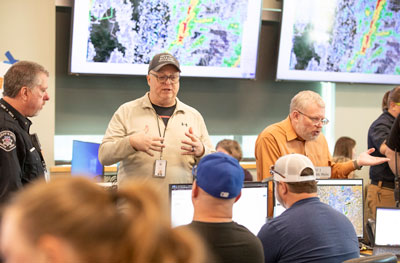
“Maintenance management software gives a central platform to align the maintenance team before and during an emergency,” said Dittemore. Supervisors can assign tasks, and staff is alerted via email and text. From the notification, they can log in and see the full details. Additionally, using data collected during and after an emergency, reports can be made to help plan for future emergencies.
In Colorado, Mike Chard is the director of the Office of Disaster Management for the city of Boulder and Boulder County. In December 2021, the Marshall Fire in Boulder County claimed two lives and caused additional burn injuries. It was the most destructive fire in Colorado history with more than 1,000 structures destroyed, including homes and commercial properties. Tens of thousands of people were evacuated.
Alerting people in such an expansive area is different than in a city like Houston, and Chard described working with his preparedness staff to implement some significant enhancements since the Marshall Fire. “We’ve got a really well-developed system now, but even within that there are still people that don’t get alerts, so we have to go door to door.” And since there are places without cell phone coverage, “our rangers serve a critical mission getting up there, knowing where people are going to be clustered, getting them notified and helping them get off the trail system.”
Chard’s office “runs a lot of the operational response duties to support our communities during disaster events.” They have functional and operational annexes, based around threat and risk assessment. Post disaster, After Action Reports examine performances and identify weaknesses, involving everybody from the first response side. “That’s one way we improve or gauge our abilities.”
Pre-event, there are drills involving Emergency Operations Center (EOC) components and city, county, nonprofit and private-sector groups within the organizational structure. A planning, equipment and training exercise model evaluates “their abilities against what they’ve been cited to do in the Emergency Operations Plan,” according to Chard. A multiple agency coordination system involves everyone from police, fire, animal management, utilities, water, search and rescue, and parks and open space.
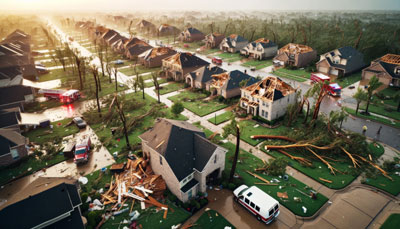
Parks in Boulder County play a critical role in utilizing rec centers for sheltering areas, safe zones, disaster assistance and resource centers. “We work with them to make sure they have the capacity to provide those capabilities when we need them during disaster response and recovery,” said Chard. He said their mountain parks and open space crews have a certified wildfire team, mitigation people, and they can be used for debris management. Parks administration staff are used in a lot of roles including resource management—helping to move equipment and supplies around.
Chard said they rely on subject matter experts within the organization regarding “ecosystem management and how to deal with habitat, dangerous species, threatened vegetation, riparian waterways, etc.” to form a recovery plan. If it’s a federal disaster, “then there’s public assistance that can be accessed, so they’ll get involved in that process along with recovery. They have hydrologists and engineers, so we bring them in to help us with developing flood prediction systems and structures… measure stream gauges and debris flows… because many times the open spaces will cause flash flooding from burn scars into the communities that are below.
“We’ll set up donation management through our community foundation for dollars, which is most important for people affected by disasters, and we’ll set up a registry, where we try to put resource to need,” said Chard, who added that they like people to donate their services, not what’s in their closet. “We’ll ask people that work in the trades, or maybe they’re health professionals or can help people board up their home.” If they receive corporate donations, they might work with the state to set up a donation center where people can “get things that are helpful to them to rebuild their lives when they’ve lost everything.”
Chard said they conducted an After Action Report following the Marshall Fire, compiling a list of things to work on and implementing the things they learned through their improvement process. “Every disaster we’ve had here in Boulder we do this process so there’s DNA between each one to the next, and that’s how we’ve built our system and how I think we’ve gotten better as a community around these disaster responses and recovery.”
Disasters arrive with little warning, and it can take time to secure much-needed funds and resources for recovery afterward. Organizations like the nonprofit Center for Disaster Philanthropy (CDP) help fill the gap. CDP helps individuals, foundations and corporations “increase the effectiveness of their philanthropic response to disasters and humanitarian crises.”
“We have relationships with lots of local government entities, especially emergency management and first responders,” said Sally Ray, director of domestic funds at CDP. “Through our grant funds we have occasionally supported their work in recovery or even in mitigation and preparedness. We also engage with them when they seek advice or counsel on how to secure funding or what to expect from philanthropy.”
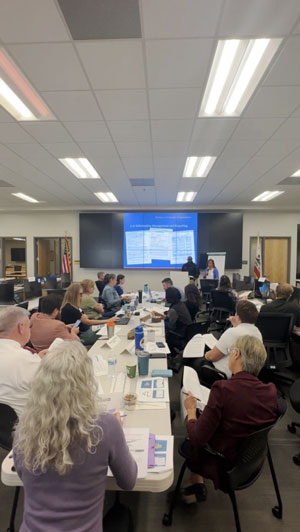
When assessing needs and determining where funds may go, CDP goes in person to “learn from communities what their needs are and how we can come alongside them to help,” said Ray. “We’re frequently communicating with community leaders, partners, local funders, etc., during the relief and response period to help provide whatever guidance or information they may need. We want to build more resilient communities in the face of ever-increasing and devastating climate hazards.”
And while CDP works with national partners, their intention with funding is to “get it as locally focused as possible,” according to Ray. “That often means funding the capacity of local grassroots organizations that have the trust of those they serve.”
And as marginalized people are often the most disproportionately affected by a disaster, CDP focuses on equitable recovery—otherwise it’s “not a ‘whole of community’ recovery.”
In Eastern Iowa, Cedar Rapids has survived its share of epic floods, including in June 2008, when the Cedar River crested to its highest level ever, flooding 10 square miles of the city, impacting 7,700 parcels and displacing an estimated 10,000 residents. And in August 2020, a derecho—a “long-lived windstorm associated with a band of rapidly moving showers or thunderstorms”—passed through several Midwestern states, bringing straight-line winds of up to 140 mph to Cedar Rapids for more than 45 minutes. The entire community was without power for a week or more, and more than 65% of the city’s tree canopy was destroyed.
Chief Greg Smith of the Cedar Rapids Fire Department said the city utilizes the Incident Command System (ICS), a “standardized approach to command, control and coordination used by public agencies to manage emergencies. The system guides all levels of government, nongovernmental organizations and the private sector to work together to prevent, protect against, mitigate, respond to and recover from incidents.”
Smith said they adhere to the National Incident Management System (NIMS) model and work with the Linn County Emergency Management Agency (EMA) to request resources and provide shelter. Following the 2008 flood, FEMA provided temporary housing trailers. The city partners with utility companies, the media and nonprofit service providers. Additionally, the Linn Area Partners Active in Disaster (LAP-AID) includes more than 40 health and human service organizations. “They primarily focus on temporary housing, food, transportation, childcare, donations, medical and mental health care, legal resources, volunteer coordination and working with vulnerable populations,” allowing the city to focus on recovery and providing services.
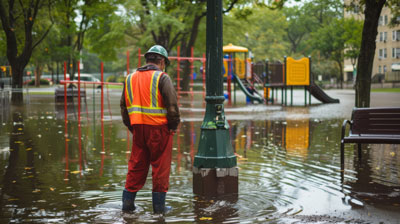
“In the aftermath of the 2020 derecho, we recognized the need to create community information and resource distribution centers,” said Angie Charipar, assistant city manager in Cedar Rapids. Five Neighborhood Resource Centers (NRC) were established where residents could access food, information and other necessities. Eventually more locations were formalized, ensuring most residents lived within walking distance of a center. “These locations include city parks, pools, libraries, the recreation center, as well as partner organization sites like malls, churches and cultural centers.”
Phillip Platz, communications division manager for Cedar Rapids, pointed out that after the 2020 derecho, power outages and disrupted cellphone and internet service affected every neighborhood. Various strategies were employed to address these challenges, including “distributing daily newsletters with consolidated information from the city and human service providers,” which were available at grocery and hardware stores, NRCs, etc.
“We held daily press conferences to share important updates and quickly posted the… details on a dedicated disaster response webpage and the city’s social media platforms,” said Platz, who added that the info also appeared in the following day’s newsletter. Many residents also drove to nearby communities to get internet service and receive information. “During the 2008 flood, volunteers distributed similar printed newsletters to affected homes.”
Following the derecho, Cedar Rapids prioritized developing lasting solutions to communication challenges through their Neighborhood P.A.C.T. (Prepare, Act, Communicate, Train) program, according to Platz. “This initiative educates our community on proactive measures for emergency readiness, including accessing critical information during regional communications and power outages.”
Added Charipar, “The program also asks neighbors to be prepared to check on and help with other neighbors for the first 72 hours after an emergency.”
Hashim Taylor, parks and recreation director in Cedar Rapids, described ongoing recovery efforts from the 2020 derecho, including clearing tree debris from waterways and public natural areas. “Additionally, our Rebuilding Ownership Opportunities Together (ROOTs) program is providing resilient and affordable single-family housing to low-to-moderate-income households affected by the derecho.”
The city recognized the need for a comprehensive plan to recover the trees lost in the derecho, according to Taylor. “We developed the ReLeaf Cedar Rapids plan to guide the city, institutions, nonprofit organizations and private landowners in replanting in an equitable, sustainable manner.” The 10-year plan involves planting 42,000 trees along streets and in parks.
As climate emergencies continue to increase, communities are taking steps to become more resilient to certain disasters. Brenna Fall, interim public works director in Cedar Rapids, said they’ve made significant strides with flood control and stormwater management since the 2008 flood, implementing the Cedar River Flood Control System, an ongoing $1 billion investment including levees, flood walls, gates, detention basins and pumping systems “designed to seal off the river during major flood events and ensure rainwater from the protected side can reach the river when the system is deployed.”
They also implement their Interim Flood Control Plan during flood events, according to Fall, outlining actions including closing river access, flood-prone parks and roads. “It also provides direction for deploying hundreds of storm sewer pumps, plugs, wells and miles of HESCO barriers and earthen berms.” She said these efforts prevented a major disaster in 2016.
As part of a Stormwater Master Plan, the city also implemented the use of Equivalent Residential Units (ERUs) for stormwater fees, based on the amount of hard surface area on each parcel like rooftops, parking lots and driveways. Through the equitable fee structure, “property owners can receive reductions in ERUs by implementing qualifying stormwater best-management practices,” said Fall.
Following any emergency, Smith said the city conducts an after-action review to “identify opportunities for improvements in future situations. Staff receive ongoing Incident Command training and run exercises for different types of disasters annually.”
And he shared numerous examples of volunteers pitching in, such as in 2008 when hundreds of residents poured to the site of the last functioning city well and protected it with sandbags. He said volunteer efforts are generally organized through nonprofit partners such as the United Way, dispatched through the NIMS model. He also described collaborative efforts undertaken by city departments during disasters and shared their employee motto: “We serve enthusiastically! We find a way! And we team up!”
Back in Texas, Allen said that when they’re needed to change from parks and rec to emergency response, they answer the call. “When Houston needs us to be something different, we put on that cape and become Superman, Spiderman and even the Hulk when need be!” RM



